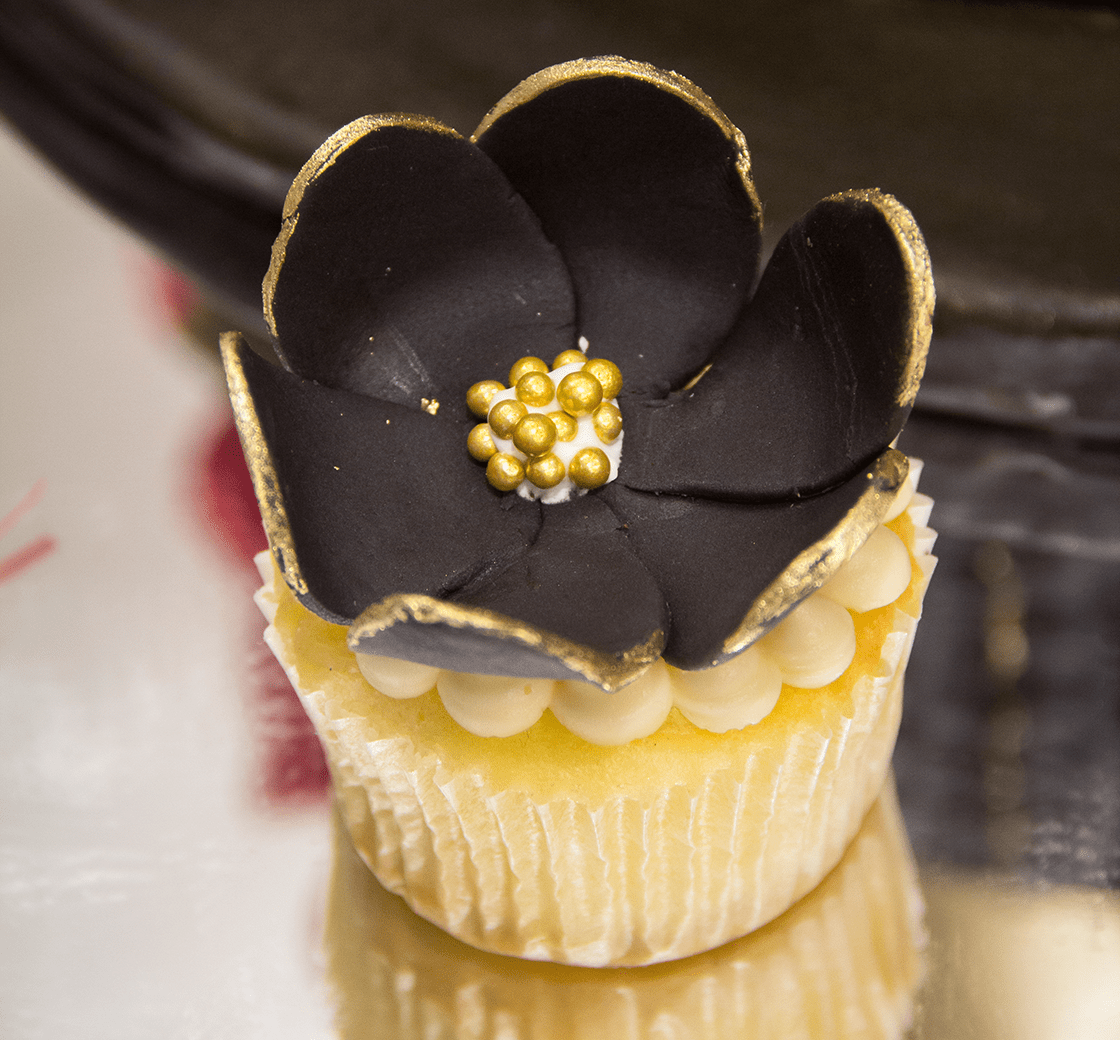
Spend two days making the most beautiful cupcakes ever. Award-winning cake artist Chef Toba Garrett reveals her secrets and techniques for the most spectacular cupcakes. The first day is spent making delicious cupcakes and beautiful edible ornaments to decorate them, such as royal icing flowers, marzipan fruits, modeling chocolates, buttercream icings, ganache, and more. On day two, you will decorate the cupcakes with two-dimensional designs, including lattice work, textured rolling pin designs, floral designs, and buttercream piped designs. Students should bring their pastry kits. Prerequisite: Technique of Cake Decorating 1.

You will work in teams to execute the class menu. At the end of class, participants gather to enjoy the food they have prepared. Wine is served with meals in most classes. All class menus are subject to change. While a snack platter is offered in both morning and evening classes, you may want to consider a light snack before joining us for class. Students are encouraged to bring a light lunch or dinner to all pastry classes.

You will work in teams to execute the class menu. At the end of class, participants gather to enjoy the food they have prepared. Wine is served with meals in most classes. All class menus are subject to change. While a snack platter is offered in both morning and evening classes, you may want to consider a light snack before joining us for class. Students are encouraged to bring a light lunch or dinner to all pastry classes.
Let's eat like we're in Italy, from the apps all the way through to a rich dessert! These dishes put you back in that Mediterranean mindset...even if you've never been there. Make and sit down to this warm, comforting Italian banquet of: fried zucchini with Parmesan; veal saltimbocca alla romana; spaghetti carbonara; cavolfiore alla napoletana (cauliflower with raisins and pine nuts).
No one doesn't like doughnuts. That includes filled doughnuts, cake-style doughnuts, glazed doughnuts and much more. You'll learn how to make yeast and cake doughnut doughs; then create different fillings and toppings, including pastry creams and glazes. Our menu includes: Classic Yeast Doughnuts & Blueberry Cake Doughnuts with glazes and fillings!
What does "healthy cooking" mean, anyway? Plant-based? Macrobiotic? Low-salt? Gluten-free? Depending on whom you ask --- whether it be a nutritionist, a doctor, a chef or your mom - you will likely get different answers. While there is no single definition for what constitutes healthy eating, most people will agree that there are several key principles and dietary guidelines that will lead you toward a well-balanced diet. In this intensive series, we will explore a sensible approach to cooking and eating, using a wholesome array of ingredients. You will learn which foods you should choose on a regular basis to keep your body running smoothly, as well as those you should try to limit and why. Each day, you’ll get fully hands-on in our kitchens as you master a variety of dishes that demonstrate how you can cook healthfully, without sacrificing flavor.
These exciting holiday dishes are ideal for accompanying delicious craft cocktails, providing a mouthwatering focus for any cosmopolitan gathering! Join us to make small bites and spreads that will amp up your holiday parties and go perfectly with some tipples. Together, we'll make and enjoy pumpkin spice snack mix; ricotta and cranberry jam crostini; duck fat marinated olives; roasted carrot dip with vegetable crudité; grilled lamb chops with yogurt sauce; cider sangria and a Manhattan.
Ranked as America’s Best Culinary School (USAToday 2019), our roster of Chef-Instructors have run top kitchens around the globe.
| (Separate multiple addresses with commas like: john@aol.com, jane@aol.com) | |